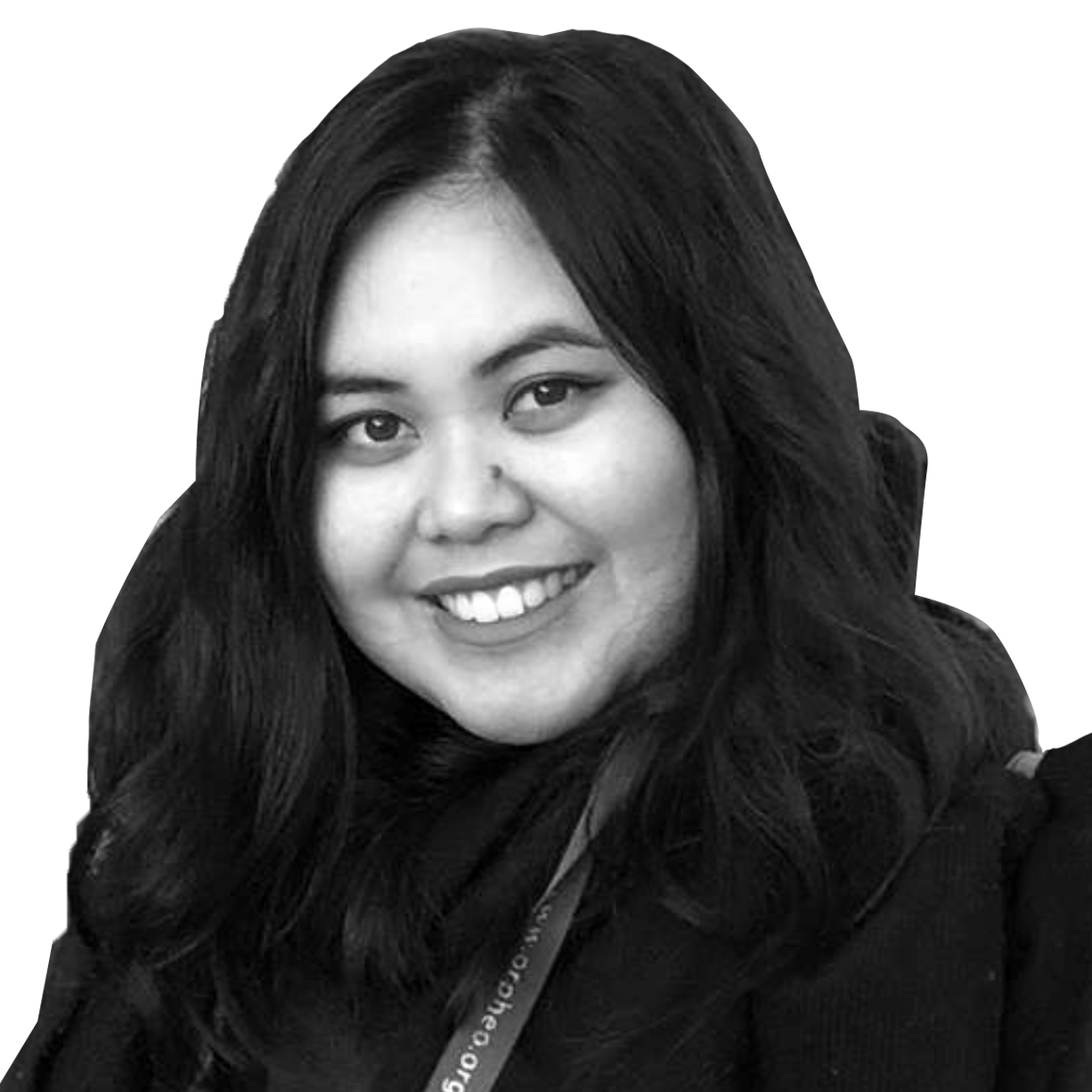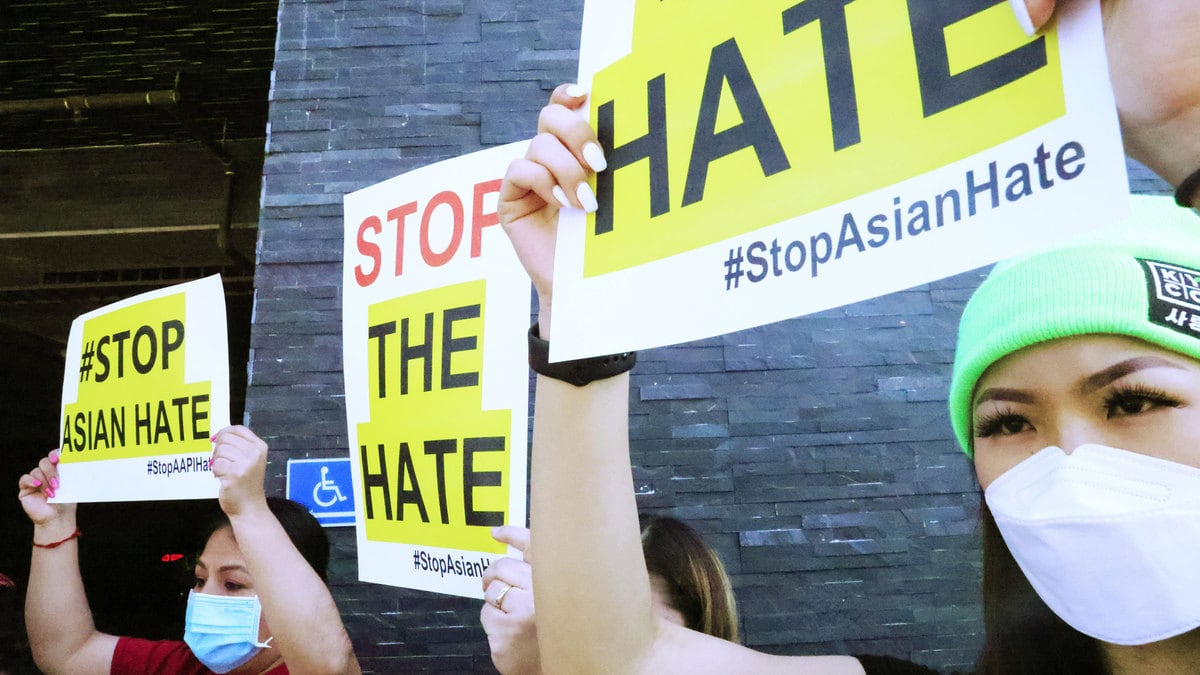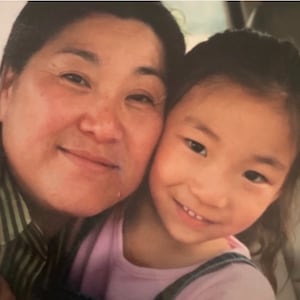After six Asian women were murdered at three different Asian spas in Atlanta, I couldn’t help but think of my own Tita Elly, the wife of my grandmother’s brother and an undocumented Filipina woman who’d been living in Chicago as a nanny for as long as I’ve been alive. She had been what many in the Filipino community called a TNT (“tago ng tago”) meaning “hiding and hiding.” She left the United States last year and returned to the Philippines for good, finally reuniting with her family after many years of separation.
But what if she hadn’t? If something, God forbid, ever happened to her in Chicago, how would we have found out? Would the police have had any idea of the intricacies of Filipino communities, migration stories, or know how to communicate in Tagalog with her loved ones? Would they have found any of us in the States? Would they have known she had a loving husband, three children, and six grandchildren waiting for her in the Philippines?
There’s a common misconception that all Asian immigrants are H1B-carrying, highly educated, wealthy people. The reality is that the Asian American community has the largest wealth disparity between ethnicities of any racial group in the United States. Many immigrated here to escape abject poverty, desolation, dictatorships, war, violence, and impoverishment, often as a result of years, if not centuries, of invasion and colonial rule, only to engage in invisible, lonely, and often laborious work well into their seventies.
ADVERTISEMENT
“I’ve lost so many people that I was serving,” recalls Isabel Kang, the outreach and services manager at the Korean Resource Center based in Los Angeles. “This model minority myth really hurts us, because the majority of people I know and have known my entire life have had to struggle so hard. I have not met many that are privileged and were born with a golden plate.”
But, Kang emphasizes, it’s “women who are paying the highest price.” Hate crime statistics show that, along with elders, women have suffered more attacks as violence against Asian Americans has spiked. The harassment and hypersexualization of Asian women that began centuries ago and that has insidiously turned into gross stereotypes and fetishizations of Asian women, is a relic of U.S. imperialism, too. It’s part of a long history of immigration exclusion and U.S. militarism in Asia, where women were often forced into sex work to satisfy American service members on U.S. bases–and where the local government had no jurisdiction to prosecute the men for crimes they might commit against those women–that has carried on to modern times in the form of “harmless” jokes.
But those jokes are not harmless, and often these intersections of race, gender, class, age, and nationality have made the most invisible women in our country also the most vulnerable to that harm.
Atlanta, especially, now has a growing Korean community, with a thriving Koreatown that rivals those of Los Angeles, New York and Chicago. The first wave of Korean immigrants to the United States were primarily women who came as military wives. Then there was a surge of Korean adoptees and the landmark 1965 Immigration Act which finally lifted decades-long racist barriers to Asian immigration. Many more came at the heels of the Korean War and IMF crises in the 1970s and 1980s to escape poverty.
Most of Atlanta’s Koreans arrived there as a result of internal migration, after being priced out of the main, more expensive hubs. Koreans viewed Atlanta as a place of economic opportunity with warmer, more agreeable weather. The exploding Korean population opened the city up to new arrivals coming directly from Korea who could find jobs and a sense of belonging within their community. Four of the victims in the Atlanta shootings were women of Korean descent–though that’s probably not a nuance the racist, sexist shooter cared about–and all six of the Asian women worked in spas as part of the informal economy.
“These are businesses that have been pretty much neglected as important areas of economic growth by city planners, and politicians–they don’t pay attention to these businesses, even though they are major sites of economic growth in cities like Atlanta, Los Angeles, and other major metropolitan areas,” says Jennifer Chun, an associate professor in Asian American Studies at UCLA.
In Chicago, a large proportion of the city’s dry cleaning businesses are owned by Korean Americans, but across the U.S., many Koreans also own beauty supply stores, hair salons, or food catering companies. Those with less means may be employed in elder care, restaurants, ethnic grocery stores, spas, or other Asian-owned businesses where English language proficiency isn’t a requirement. Some of these businesses are cash-based and unlicensed, almost like women-led underground cooperatives where workers can earn money under the table. For many elderly Korean women, working in spas where they can help with business upkeep by cooking and cleaning is very common, as many are turned away from mainstream jobs as waitresses, restaurant staff or grocery store cashiers for being too old. But with such limited options are also limited benefits. The women who keep the informal economy alive are barely kept up by their pay and hardly have access to basic services like healthcare.
“What do you do if you get sick?” Inhe Choi, executive director of the HANA Center, asks her clients. They point to their head, she says. “It’s willpower. That’s what their health care is.”
Migrants working 12-hour shifts and seven-day weeks don’t have the time or money to get regular check-ups or preventative care. Instead, they just try not to engage in reckless behavior.
“They go to the Eastern doctor for acupuncture if they have money. They try to take care of their bodies as much as they can,” says Choi. “They drive perfectly because they can’t afford to be pulled over.”
There is an incredibly low rate of crime in immigrant communities in part because the threat of deportation and the potential cost of a health emergency just isn’t worth it. Many, especially those who are undocumented or engaging in sex work, go to further lengths to protect themselves from the police. Choi told me the story of one low-income single mother, a massage worker, who saved up to buy a fancy car. “I’m trying to drive a fancy car, that way I know the police will leave me alone. They won’t target me,” the woman told her. Other women, she said, would dress really nice or act really cheerful and pleasant. “There are different ways to hide, different ways the shadow comes,” says Choi. “These are all very intentional [behaviors], and I’m sure that is an unbelievable stress on them.”
Kang and Choi told me that these women often come to organizations for help with English-language lessons or immigration papers, but don’t want to talk about their lives and struggles. A lot of them “can’t afford to open up... How are they going to manage it?” Choi asks. “They just keep going.”
The burden carried by so many Korean migrant women is only made heavier by the culture of silence that is a result of the stigmas of poverty. In a community where churches are one huge pillar of the community, a source of cultural belonging, and a center of many migrants’ social lives, there is a conservative thinking and a type of respectability politics that still prevails, which has made many ashamed of their immigration status and the type of work they do, and afraid that such a knowledge within the community could be weaponized against them and lead to their deportation.
Along with the responsibilities of motherhood, many Korean women are the breadwinners of their families, and sometimes find a second family in the extremely tight-knit women they work alongside every day. While the U.S. has pursued a policy of assimilation for immigrants, there is often no meaningful way that the government actually encourages proper integration into society. Immigrants will always congregate together in a country that prizes whiteness, because the violent neglect and the shared loss of language and culture without any form of support or acknowledgment is extremely traumatizing and lonely.
For many, the choice to move to the U.S. is one of survival. From war brides to green card marriages, the motives, including love, for gaining legal status through a spouse vary but they are nevertheless locked into a power dynamic that exposes them to potential exploitation or abuse. Many marriages are still borne out of U.S. white supremacist, imperialistic, militaristic roots where Asian women are viewed like a commodity. Even the women who come here “the right way” must still face the obstacles of assimilation and isolation.
For undocumented populations, these fears are only amplified. Koreans, especially, represent a large number of the 2 million undocumented Asian immigrants–about one in six Koreans in the U.S. is undocumented.
“People who are undocumented have to factor their status into everything they’re doing,” Becky Belcore, executive director of NAKASEC, tells me. “It’s an omnipresent part of their life in whatever decisions they’re making and how they’re protecting themselves.”
While the Latinx community and young people have been the unapologetic face of the undocumented movement, people forget that there are undocumented seniors and middle-aged people, too. If not forgotten, they are often demonized.
“The DACA parents are so heartbroken for their kids,” Kang tells me. “I’ve had a grown man just sobbing in my office...they feel so guilty. They are only trying to do better by their family.”
But undocumented women, especially those from poorer backgrounds with limited English and lower levels of education, are also exposed to the most domestic violence–often enabled by the police with impunity. Kang tearfully recounted a story of one Korean woman in her sixties who had worked in multiple restaurants but was repeatedly stalked by a younger partner who was an American citizen and used his status to manipulate and abuse her. She would quit a job and move, and he would find her.
“How many times the police would interrupt her sleep,” Kang said. “The guy would call the police on her and say ‘Arrest her! Arrest her!’ and they would.” One day, only months from finally getting her green card, the woman disappeared. Kang could remember the exact Saturday morning in a Sephora with her daughter, that she got the news: the woman had been killed by her partner in a murder-suicide. “This is what the police did, and why she didn’t trust the police.”
“The most tragic thing is that I did not have any contact to alert any of her children... I almost stopped working, it was way too much,” Kang said, emotional. She described this vibrant woman to me: “I remember how, because she couldn’t do anything on her own, I drove with her so many times. She only would listen to [famous Korean singer] Na Hoon-a… I remember every time her car was blaring with that song over and over… She was always looking at the sunny side. She was so brave, she raised all her kids, they were luckily in Korea. They did not have to witness this kind of shit in her life... Her favorite food was Pho, but she would put three times the hot pepper sauce in her food. Those things are why we continue raising our voices.”
The state hurts families, too. Kang told me another depressing story of one well-adjusted family with “legal” papers, where the father was a manager at an Asian grocery store. They were caught in an FBI sting operation that targeted the clients of an immigration company that had issued fraudulent visas; in turn, the entire family, including two young adult male children, went to jail for months. Their mother, separated, was left to languish alone in a cell. They were found innocent, but the whole ordeal—the shame and humiliation—destroyed the family. Not only were they victimized by a fraudulent agency, they were victimized by the people who should be our protectors.
These are the injustices so often inflicted on the immigrant communities around us. But the barriers to immigration are so ingrained within our country and the world that it has become normalized to judge them solely with the language of “hard work” instead of looking at their actual lives. Despite family reunification (which is itself rooted in racist policy) being used as the basis of our current immigration policy, we instead concern ourselves with how much immigrants “contribute” to our economy, how “exceptional” they are in their jobs and what “value” they bring in taxes.
We shouldn’t minimize these women by simply recognizing how hard-working they are. But we should look deeply at the courageous lives they’ve lived to survive in a country that has done its best to make them survive against all odds.








